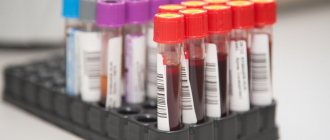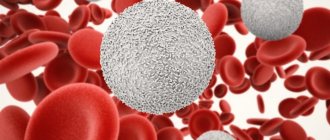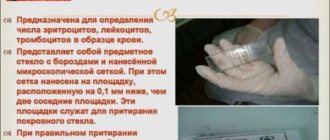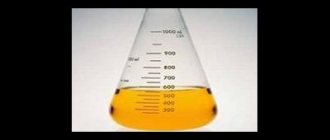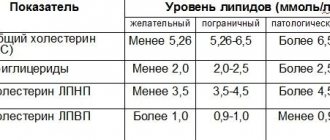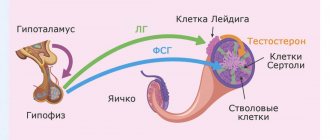What do leukocytes show in a blood test?
Nowadays, most laboratories are equipped with automatic counters that print analysis results with an abbreviation in English.
The WBC indicator reflects the total content of leukocytes in the blood. These formed elements are formed in the red bone marrow, and their differentiation and maturation occur in various organs of the immune system. The general function of leukocytes is to protect the internal environment of the body from various foreign agents, such as bacteria, viruses, fungi, allergens and even its own cells (obsolete, those that have changed their functional purpose or genetic code - tumors). White blood cells are divided into several groups of different cells that perform specific functions.
Leukocytes and their significance
White blood cells - the main group to which basophils belong - are otherwise called leukocytes, and their most important function is considered to fight threats to the body. Leukocytes are divided into groups according to the structure of the nucleus and the presence of granules with active substances in the cytoplasm; the latter phenomenon is also called graininess. The structure also determines the variation in functionality: many leukocytes are, to one degree or another, capable of performing the same functions (for example, capturing foreign agents), but each type of cell is usually busy with its own business and is adapted for a specific task.
An increase in the number of leukocytes indicates the body’s readiness to resist harmful effects, and basophils cannot be an exception to the rule. There are two concepts that imply an increase in the number of these cells - basophilia and basophilocytosis.
The "Family of Defenders" includes:
- Neutrophils are the main white blood cells that specialize in eliminating cellular aggression (bacteria), in the fight against which they usually die, forming compactions (infiltrates) and/or foci of septic inflammation (ulcers).
- Lymphocytes - perform the functions of recognizing foreign agents and transmitting information about them to responsible cells, and also provide antiviral protection.
- Monocytes (macrophages) are “eaters” of large cells that are too heavy for neutrophils.
- Basophils - regulate vascular permeability, prevent allergic and inflammatory reactions, affect blood clotting.
- Eosinophils – fight allergies and poisons (toxins) released by parasites, such as helminths.
leukocyte
blood test results mean A general analysis with a leukocyte formula shows the qualitative composition and percentage of leukocytes to the total number of blood cells. Deviations from the norm make it possible to identify pathologies in the early stages.
Basophils in the classification of leukocytes
Leukocytes are granular and non-granular. Non-granular cells include cells with a solid nucleus and no inclusions in the cytoplasm, while the other group, in addition to inclusions, has segmentation of the nucleus. The classification is clearly shown below.
Pathologies of the thyroid gland occupy the second place in the frequency of damage to citizens after cardiovascular diseases. Thyroid dysfunction leads to problems with metabolism and the nervous system, and it negatively affects the patient’s weight and general well-being. Read more in the article: “thyroid problems: symptoms in women.”
1. Granular leukocytes (granulocytes):
- Neutrophils are the main type of leukocytes. Their task is to capture bacteria during the process of phagocytosis and destroy them using enzymes and other protein substances of the granules.
- Eosinophils are involved in the production of antibodies and the development of an allergic reaction. They can only absorb small pathogens.
- Basophils form an allergic response.
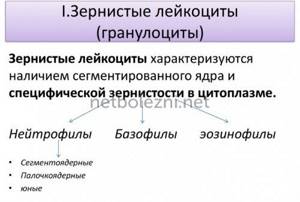
2. Non-granular leukocytes (agranulocytes):
- Lymphocytes produce antibodies, destroy pathogens and regulate the activity of other cells. B-lymphocytes create antibodies to foreign structures, different groups of T-lymphocytes regulate immunity and antibody synthesis in different ways, and NK-lymphocytes destroy cells that differ from normal ones in one way or another.
- Monocytes are large cells that can capture large pathogens without dying.
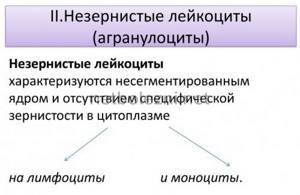
Granular leukocytes are named according to their ability to absorb a particular dye when examined under a microscope. Basophils, for example, stain only with a basic dye, while eosinophil structures can only change color with acidic eosin. There are fewer basophils in the blood than other leukocytes.
Allergic reactions often appear unexpectedly and can be triggered by any allergen. Most often, the pathology manifests itself in the form of a rash, red spots on the skin, and itching. Read more in the article: “drugs for the treatment of skin allergies.”
WBC level norms and deviations
The total content of white cells in the blood of the same person may vary depending on functional conditions and time of day. A slight decrease in white blood cells may be observed with physical and/or emotional exhaustion (fatigue).
An increase in leukocyte levels is observed with mental or muscle overstrain, after eating, under the influence of heat or cold. In addition, the relative norm of maintenance has gender and age dependence.
Eosinophils
Eosinophils are a small number of white blood cells that are found in human blood and tissues. They are an indispensable element that provides immunity.
Like other white blood cells, they are formed from bone marrow, and their progenitor is a single stem cell. The norm is 1–4%.
In total, eosinophils live about 12 days, but do not spend all of this time in the bloodstream. After 3-4 days of ripening, they enter the bloodstream and remain there for only 6-12 hours. Then they pass into the tissues and accumulate in especially large quantities in the lungs, under the mucous membrane of the digestive tract, and in the skin.
When the number of eosinophils increases, the condition is called eosinophilia, and the reverse change is called eosinopenia. As a rule, bright changes are symptoms of diseases, but some physiological fluctuations in their number are possible within normal limits. For example, an increase and decrease in eosinophils can be observed depending on the time of day; at night they are usually most in the blood.
Leukocyte norms of peripheral blood
| Categories | Values | Unit measurements |
| Newborns up to 3 days | 7-32 | 109/l |
| Infants (up to 1 year) | 6-18,5 | 109/l |
| Children from 1 year to 2 years | 5-17 | 109/l |
| Children from 2 to 6 years old | 5-16,5 | 109/l |
| Children from 6 to 16 years old | 4,5-13,5 | 109/l |
| Boys and girls 16-21 years old | 4,5-11 | 109/l |
| During pregnancy | up to 15 | 109/l |
| Middle aged men | 4,2-9 | 109/l |
| Middle aged women | 3,99-10,4 | 109/l |
| Elderly men | 3,9-8,5 | 109/l |
| Elderly women | 3,7-9 | 109/l |
Leukocyte blood count: interpretation of results
Increasing performance
An increase in neutrophils in the blood occurs during infectious diseases and during some specific patient conditions. For example, in acute infectious diseases, candidiasis, rheumatism, tumor processes, lead or mercury poisoning, during diabetes. Also, an increase in the number of neutrophils can be influenced by conditions not associated with diseases, for example: severe physical exertion, stressful situations, overheating or hypothermia.
An increase in the number of lymphocytes indicates the presence of an infectious disease, blood pathology, lead or arsenic poisoning. Some medications can affect the increase in lymphocytes.
A previous infectious disease affects the increase in monocytes. Monocytes increase in autoimmune diseases, in the presence of cancer, and during carbon and phosphorus poisoning.
An increase in eosinophils occurs in response to allergic reactions, when taking certain antibiotics, medications for tuberculosis and convulsive conditions. Parasitic infections, diseases of the skin and respiratory system, and the acute course of an infectious disease can also change the indicators.
Basophils in the blood increase during influenza, chickenpox, tuberculosis, allergic reactions, ulcerative colitis due to increased sensitivity to any food, and an increase may also indicate the presence of cancerous tumors in the body.
Decrease in indicators
If the number of neutrophils decreases, the doctor may suspect that the patient has an infectious disease, hypersensitivity to drugs, anemia and anaphylactic shock.
Lymphocytes decrease in conditions of immunodeficiency, acute inflammatory processes in the body, renal failure and systemic lupus erythematosus.
A decrease in monocytes occurs during oncohematological diseases, purulent infections and aplastic anemia, the use of certain drugs and in a state of severe shock.
The decrease in eosinophils is affected by severe purulent infection and heavy metal poisoning.
Pregnancy, severe stress and the period of ovulation can be a natural cause of a decrease in basophils. Pathological causes include infectious diseases and Cushing's syndrome.
Leukocyte norms in adults in an extended blood test
| Categories | Values | Unit measurements |
| Neutrophils | 55 | % |
| Lymphocytes | 35 | % |
| Monocytes | 5 | % |
| Basophils | 1 | % |
| Eosinophils | 2,5 | % |
Considering the various physiological (normal) possibilities for deviations in the level of white blood cells, it is recommended that the test be taken in the morning, on an empty stomach.
In women of reproductive age, the number of peripheral leukocytes also increases during periods of menstrual bleeding and ovulation.
Leukocyte formula:
| Index | × 10x9/l | ratio, % | |
| Neutrophils | segmented | 2,1–5,4 | 43–71 |
| stab | 0,4–0,3 | 1–5 | |
| Basophils | up to 0.063 | up to 1 | |
| Eosinophils | 0,02–0,3 | 0,5–5 | |
| Lymphocytes | 1,1–3,1 | 17–38 | |
| Monocytes | 0,08–0,5 | 3–12 | |
Factors that reduce leukocytes
A low white blood cell count (leukopenia) is a sign of a weak immune system. The reasons may be low cell production in the bone marrow, a lack of micro- and macroelements and the presence of systemic diseases. The most common factors of leukopenia include:
- alimentary (food) deficiency;
- B12 folate deficiency anemia;
- long-term (sluggish) infectious processes with depleted immunity;
- diseases of the liver and spleen, other disorders of the digestive organs;
- taking a number of medications;
- hormonal and/or metabolic dysfunctions;
- autoimmune diseases;
- leukemia in the initial stage or other oncology with metastases to the bone marrow;
- radiation (radiation) damage.
Blood test readings should be deciphered by a qualified medical professional. Early detection of any abnormalities in the leukocyte profile plays a significant role in identifying the actual cause and preventing the development of diseases.
Possible violations
Knowledge of the role of basophils suggests that most of them are found in the blood when the body needs a protective reaction. This may be due to foreign substances, poisons, invasion of the body by bacteria, severe inflammation or even tumors. To make an accurate diagnosis, doctors not only look at the number of basophils, but also evaluate the content of other cells in the blood.
| Cause | Change in the number of basophils | Other changes in the blood | Possible additional tests |
| Allergy | 1-2% (change less than half) | Moderate increase in the number of leukocytes, a sharp increase in eosinophils, high levels of immunoglobulin E | Immunogram, collection of information about intolerance, skin test, allergy chip |
| Autoimmune diseases | Individually, growth indicates the acute phase of the disease | Increased ESR, possible leukocytosis | Blood for rheumatoid tests (rheumatoid factor, antibodies to streptococcus, C-reactive protein, plasma protein level), urine test |
| Nonspecific ulcerative colitis | Individually | Decrease in the number of red blood cells and hemoglobin, possible leukocytosis, increase in ESR, platelet count | Immunological blood test, biochemical analysis, feces for occult blood, coprogram |
| Myxidema | Low hemoglobin, many lymphocytes and eosinophils, low levels of thyroid-stimulating hormones | Blood for hormones T4, T3 TSH, ultrasound and scintigraphy of the thyroid gland | |
| Chronic hemolytic anemia | Low red blood cells, hemoglobin | Blood tests for bilirubin, stool and urine tests, bone marrow biopsy | |
| Acute infectious liver diseases | Increase in bilirubin, triglycerides, possible decrease or increase in leukocytes, decrease in hemoglobin, thrombocytopenia, increase in ESR | Analysis for immunoglobulins, bilirubin, liver enzymes, triglycerides | |
| Helminthiasis | Individually, growth only in the acute period | Eosinophilia, antigens to parasitic worms | Linked immunosorbent assay |
| Chronic myeloid leukemia | Up to 5-20% | Many granulocytes with a predominance of young forms, anemia is possible | Bone marrow puncture, PCR analysis, fluorescent hybridization, cytogenetic study |
| Mast cell leukemia | Neutrophil growth | Skin biopsy, histamine in urine, abdominal ultrasound, x-ray | |
| Polycythemia vera | Erythrocytosis, leukocytosis, thrombocytosis | Trephine biopsy, liver function tests, general urinalysis |
It is important to understand that minor fluctuations in basophils are quite normal, as is a single test result that, according to indications, falls outside the norm. The greatest accuracy is achieved by repeating the procedure three times every 2-3 days. It is best to donate blood in the same laboratory, so as not to increase the error from different instruments.
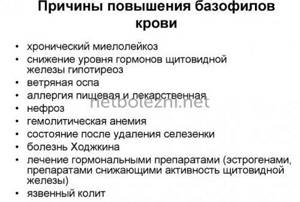
Basophilia in allergies
An allergic response is caused by a person encountering a substance that has already been recognized by his body as dangerous. The cause could be anything: from pollen and dust to a component of some rare material. Some reactions develop instantly, others are delayed; At first, basophils rush en masse to the source of the threat and are destroyed: this means that there are fewer of them in the blood. In the following days, the analysis may show basophilocytosis due to increased production of new cells.
A search for immunoglobulin E in the blood helps to reliably confirm an allergy: its value should be increased.
With chronic allergies, basophilia cannot be avoided either. Bronchial asthma or atopic dermatitis becomes a reason to expect results in the patient with an increased number of this type of granulocytes. Medicines can unexpectedly cause intolerance, and severe alcohol poisoning on the eve of blood testing can also adversely affect the result.
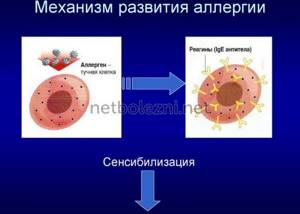
Autoimmune diseases
Since basophils carry substances for the development and intensification of inflammation, an increase in the number of such cells may indicate an acute manifestation of such a process. It is especially pronounced during exacerbation of autoimmune diseases, when the defense system is directed against its own cells. During remission, basophil levels usually return to normal. The following often causes basophilia:
- rheumatoid arthritis - joint damage and inflammation of internal organs;
- systemic lupus erythematosus - a massive attack by antibodies of connective tissue and small vessels;
- rheumatic carditis - damage to the heart;
- nonspecific ulcerative colitis.

A high erythrocyte sedimentation rate (ESR) will confirm an autoimmune disease, but to be sure, you need to donate blood for rheumatic tests to assess the severity of the disease. Nonspecific ulcerative colitis occupies a special place among serious inflammatory processes. The destruction of the intestinal walls in this disease prevents nutrients from being absorbed effectively and leads to anemia. If an infection joins the process, a blood test will show an increase in the number of all leukocytes. As the extent of the lesion increases, the number of platelets in the patient’s blood also increases.
Other causes of basophilia
The doctor's attention may be drawn to other cases, many of which are associated with inflammation or changes in blood composition. The simplest option in this case is a bacterial or viral infection that has not been noticed by the woman, but is active. Other options turn out to be more serious.
- Acute infectious liver lesions. The deterioration of the organ’s functioning in one way or another affects the components of the blood. For example, chronic hepatitis C causes a relative increase in the content of lymphocytes and monocytes, which the virus considers as a target. Problems in the liver lead to accelerated death of red blood cells and rapid destruction of platelets.
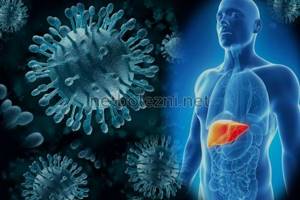
- Hemolytic anemia is a rare disease leading to loss of red blood cells. At the same time, the blood is saturated with the products of their breakdown, and the production of new cells is enhanced.
- Myxidema is a decrease in the synthesis of thyroid hormones.
- Helminthiasis is an infection with parasitic worms. Basophils attract eosinophils to the invaders, but overall levels are mildly elevated and quickly return to normal.
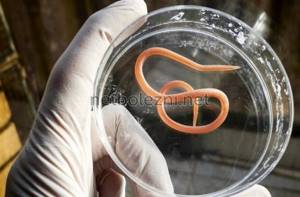
The first conclusions about the diagnosis can be made from a general blood test, but for clarification, the doctor may prescribe a whole range of studies. Basophilocytosis in such diseases is not very pronounced. If the process is sluggish, it will not be possible to detect it by the level of the fewest leukocytes.
Malignant lesions of the circulatory system
If the level of basophils exceeds 4-5%, we can talk about the most severe and dangerous diseases of the hematopoietic organs. They lead to tumor degeneration of the progenitor cell in the bone marrow, as a result of which basophils are formed in excess. Examples could include several conditions at once.
- Chronic myeloid leukemia is characterized by damage to the granulocytic lineage. It is caused by a chromosomal mutation and includes a long chronic phase during which symptoms are almost insignificant.
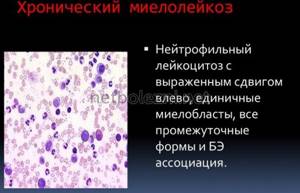
- Mast cell leukemia occurs with a massive proliferation of mast cells that affect the skin or internal organs.
- Polycythemia vera is an acceleration of the creation of all blood cells, especially red blood cells.
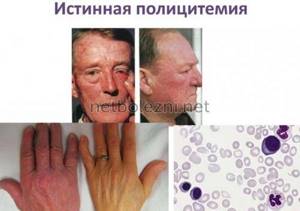
In all these cases, basophils are produced not in response to an invasion, but as a result of improper functioning of the hematopoietic organs. In turn, this work is disrupted by a mutation, and additional tests are aimed at identifying signs of it. An uncontrolled increase in hematopoiesis affects all organ systems at once, which necessitates the need for prompt treatment. Sometimes other cancers also lead to basophilia: for example, lung damage.
What does blood sugar show?
To determine blood sugar, a biochemical test is performed. Sugar (glucose) is an indicator of energy metabolism. Its content directly affects the viability of all cells of the body, especially the cerebral cortex. A lack of glucose leads to oxygen starvation, and an excess leads to metabolic disorders both inside the cell and with the interstitial fluid.
The glucose level does not differ by gender, but it is different for children and adults. In addition, the value of the indicators depends on the location of the analysis (peripheral or venous blood).
Neutrophils
Neutrophils come from red bone marrow, they are formed from a single stem cell, which is the ancestor of all blood cells. However, stem cells do not immediately turn into neutrophils. Between these two forms there are several stages, several intermediate forms.
There are 6 types of neutrophils:
- myeloblasts;
- promyelocytes;
- myelocytes;
- metamyelocytes;
- band neutrophils;
- segmented neutrophils.
Most of all is in the blood of the latter. They are present in an amount of 40–75% of the total number of leukocytes. The number of rod-shaped neutrophils is significantly smaller, they can be 1–6%. The number of young cells does not reach 1%.
Glucose standards
| Category | Meaning | Unit measurements |
| Peripheral blood in adults | 3,3-5,5 | mmol/l |
| Venous blood in adults | 3,7-6,1 | mmol/l |
| Children under one year old | 2,8-4,4 | mmol/l |
| Children under one year of age (venous blood) | 3,3-5,0 | mmol/l |
| Children from 5 years old | 3,3-5,5 | mmol/l |
Blood sugar levels in adults should be in the range of 3.3 – 5.5 mmol/l. An increase in this value to 5.9 – 6.9 indicates a prediabetic state. If the glucose level is above critical levels, diabetes mellitus is diagnosed. With such values, consultation with an endocrinologist and specific tests are required.
Why is a leukocyte blood formula needed?
The leukocyte formula is the percentage of leukocytes in the blood serum (eosinophils, neutrophils, lymphocytes, basophils, monocytes).
This analysis allows you to determine the current state of the immune system, identify inflammatory processes in the patient’s body and determine the etiology of allergies. It is known that leukocytes protect the human body from dangerous microorganisms. One of the main tasks of leukocytes is the destruction of foreign particles. If an inflammatory process occurs in the patient’s body, it is immediately reflected in the leukocyte count.
Complete blood count (CBC/Diff - 5 fractions of leukocytes) - capillary blood from day 1
from 290 ₽
Sign up
Clinical blood test (CBC/Diff - 5 fractions of leukocytes) + ESR from day 1
from 294 ₽
Sign up
Complete blood count (CBC/Diff - 5 fractions of leukocytes) from 1 w.d.
from 290 ₽
Sign up
When leukocyte counts change in the blood, it is necessary to determine in which direction the deviation occurs. This study will help you quickly find the problem and make a diagnosis. However, it should be taken into account that changes in blood parameters without in-depth diagnostics are not a characteristic and final sign for making a diagnosis.
The main factors for reducing hemoglobin
Hemoglobin levels decrease during pregnancy due to an increase in the total volume of circulating blood.
Pathological changes may indicate anemia:
- with large blood loss;
- chronic bleeding in small volumes (hemorrhoidal, uterine, etc.);
- with nutritional deficiency (iron-B12-folic deficiency);
- when transfusing large amounts of fluids and/or blood plasma;
- with massive destruction (hemolysis) of red blood cells;
- for various chronic diseases;
- with inhibition of the hematopoietic function of the bone marrow.
Any deviations from the norm require consultation with a therapist. If there are significant changes in hemoglobin levels, the patient is referred to a hematologist.
Be sure to regularly take a general blood test and undergo preventive examinations. The earlier the disease is detected, the more gentle and timely the treatment will be.
When is the test prescribed?
A clinical blood test with a leukocyte formula is indicated for patients with various pathologies. It allows you to assess a person’s health status with a comprehensive and timely diagnosis of diseases, including those occurring in a latent form.
Indications for a clinical blood test with a leukocyte formula are:
- medical examination or routine medical examination;
- preparation for surgical treatment;
- infection or suspected infection;
- suspicion of inflammation or parasitic infestation in the patient’s body;
- allergic reactions;
- prescribing certain medications;
- monitoring the effectiveness of treatment.
Before donating capillary blood, it is recommended not to drink alcohol during the day, not to eat for 2-3 hours, not to smoke for 30 minutes and to avoid stress and excessive physical activity.
